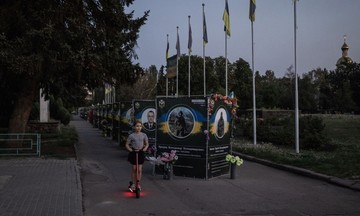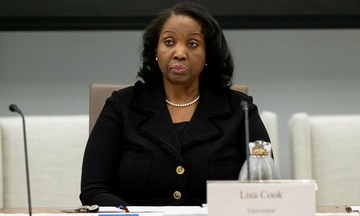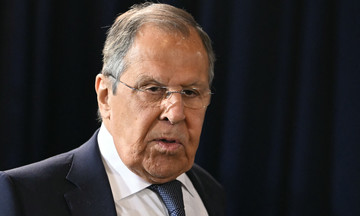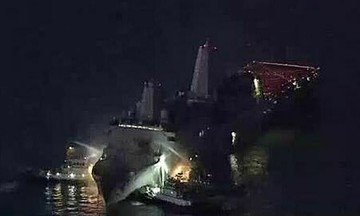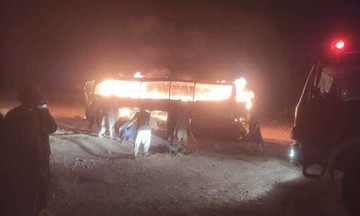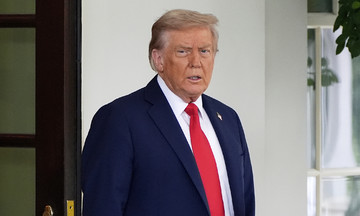Discussions on "security guarantees" to prevent further Russian aggression after a potential peace agreement took place in Washington on 18/8 between US President Donald Trump, Ukrainian President Volodymyr Zelensky, and European leaders.
Security guarantees for Ukraine have become a central aspect of any peace deal aimed at ending the conflict. This has been a key topic in President Trump's summits with Russian President Vladimir Putin, as well as in discussions with Zelensky and European leaders.
Following the outbreak of hostilities in 2022, Ukraine applied to join NATO, hoping to secure Article 5 protection.
This article stipulates that an attack on one member is considered an attack on all, triggering a collective response. However, Trump recently declared Ukraine's NATO membership "unrealistic".
While Ukraine's NATO accession is on hold, Steve Witkoff, President Trump's special envoy, stated on 17/8 that the US could participate in "Article 5-like safeguards" for Ukraine, a proposal Russia has reportedly accepted.
On 18/8, President Trump hailed Russia's acceptance of US and European security guarantees for Ukraine as significant progress. He refrained from providing specifics and downplayed expectations of NATO-level protection for Ukraine.
"I don't know if you can call it 'NATO-like'," he said.
The Russian Foreign Ministry spokesperson stated that Moscow would never accept NATO troops on Ukrainian soil.
President Zelensky seeks maximum security assurances for Ukraine, following recent intensified Russian attacks and battlefield setbacks.
"Everything," Zelensky stated, expressing his expectations for these guarantees. "Everything" could encompass Western troops and equipment on the ground, intelligence sharing, and military aid commitments.
Amidst the uncertainty, various perspectives exist on how the US and Europe could provide these guarantees. "NATO's Article 5 is not a solution for everything. It was intentionally designed with ambiguity," noted Michael O'Hanlon, a senior fellow at the Brookings Institution in Washington.
This ambiguity, he argues, allows the US flexibility in providing "NATO-style" security assurances to Ukraine at varying levels.
 |
President Trump meets with President Zelensky and European leaders at the White House on 18/8. Photo: AFP |
Frederick Fleitz, a member of the America First Policy Institute (AFPI), a think tank established to promote President Trump's America First agenda, is working with Keith Kellogg, the US special envoy to Ukraine, on a security plan for Kyiv.
Fleitz previously told Reuters that "arming Ukraine to the teeth" is part of such security guarantees. This could involve Trump's proposed arms sales to NATO, which would then transfer them to Ukraine.
"We're not giving it away for free. We're selling weapons," Trump stated at the Oval Office on 18/8. He suggested Europe would lead the initial defense buildup for Ukraine, with the US in a supporting role.
UK Prime Minister Keir Starmer mentioned deploying a force from a "coalition of the willing" to Ukraine after a ceasefire or peace agreement. However, details about the force's composition and contributors remain unclear.
One idea involves establishing a fully armed "peacekeeping force" to support the Ukrainian military. This defensive force would act as a deterrent, potentially discouraging further Russian offensives against NATO troops.
However, establishing a credible deterrent would require tens of thousands of troops, a challenge for European countries facing troop shortages, limited defense budgets, and reluctance to risk their personnel.
A second option involves a smaller European "tripwire" force, insufficient for a strong defense but capable of triggering a larger NATO response if Russian forces advance. However, NYTimes commentator David Sanger notes this untested theory could be a significant gamble for Europe.
A third option is a few hundred European observers to monitor and report impending military actions. Given current surveillance technology (satellites, ground cameras), their defensive capabilities would be minimal.
President Trump hasn't committed to deploying US troops as part of any security force in Ukraine. The force's form and size would likely depend on the peace agreement, if negotiations reach that stage.
 |
Ukrainian soldiers fire a D-30 howitzer in Zaporizhzhia province. Photo: AFP |
Luke Coffey, a senior fellow at the Hudson Institute in Washington, suggests the most realistic US contribution involves intelligence sharing, Black Sea patrols, and positioning US forces outside Ukraine for rapid deployment during a crisis.
Coffey views this neutral approach as potentially acceptable to mainstream Washington policymakers, providing meaningful support without depleting US resources.
He opposes a bilateral US-Kyiv security agreement, noting that deploying US troops to defend Ukraine is even less realistic than Ukraine joining NATO.
According to Mark Episkopos, a research fellow in the Eurasia program at the Quincy Institute, Article 5-like security guarantees for Ukraine could resemble current Western support, but "with a few steps further".
These steps could include a no-fly zone, more advanced weaponry, and limited European troop deployments in rear areas. "The US contribution could focus on logistics, air support, military aid, or targeting data. All of these are vital roles that do not require American boots on the ground".
"Such a proposal doesn't guarantee that Western soldiers will fight to defend Ukraine, but it doesn't entirely close the door to intervention either, creating a kind of strategic ambiguity that in itself could be a deterrent to Russia," Episkopos explained.
Vu Hoang (According to The Hill, The Washington Post, Reuters)






